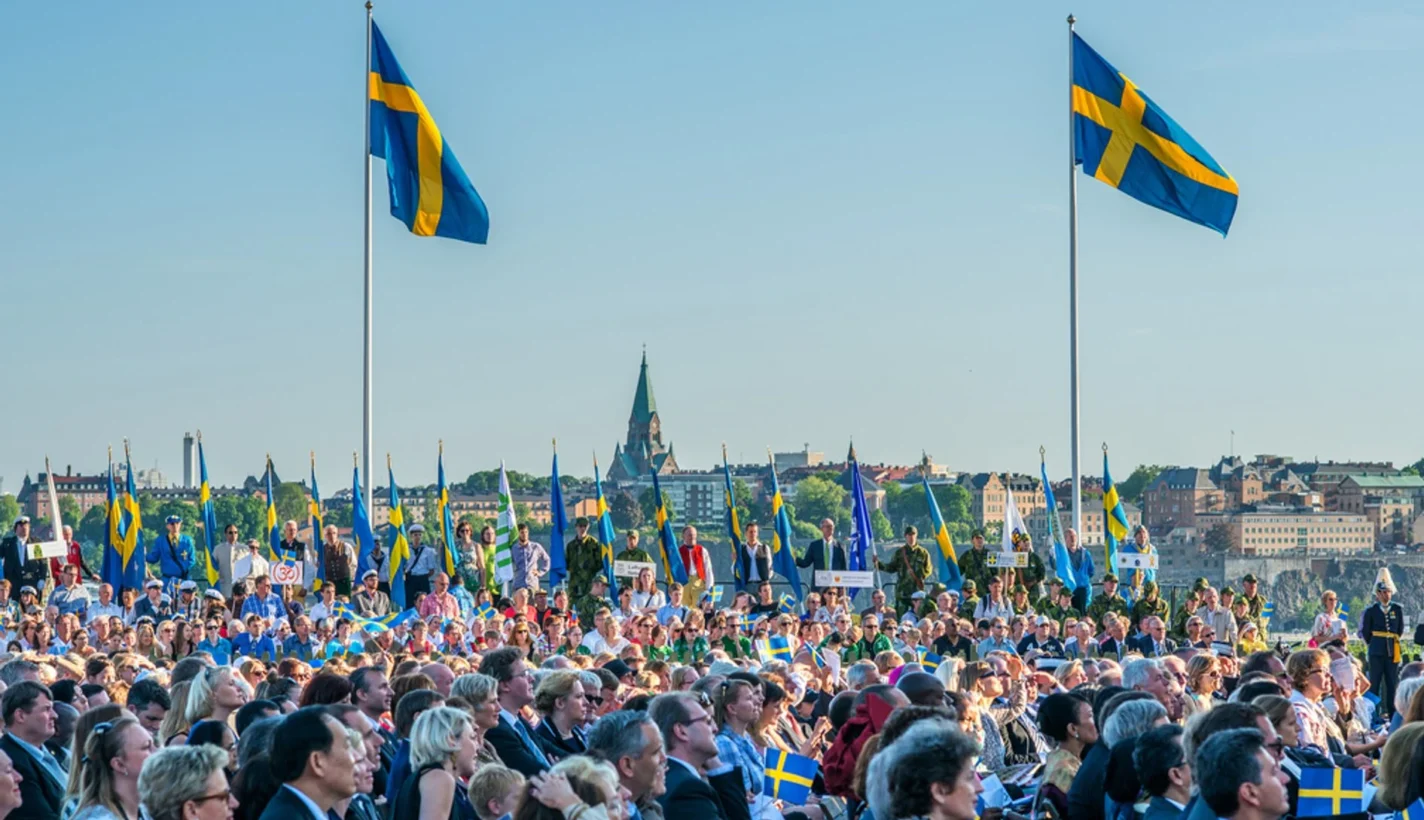November 19, 2022
Want to know more about Swedish culture? Then you must know the national holidays and celebrations of Sweden.
The national holidays are considered one of the core aspects of any culture. Every country has its own celebrations to honour and memorialize its important sacrifices, religious events or some cultural traditions. One of the most exciting parts about moving to new country is to explore and celebrate the local holidays and traditions of that country. Actually it is a very important step to help you to adapt fast and go through the culture shock phase quickly. It is fantastic to learn experiences that might not otherwise occur in your home country. In my experience, Sweden is a bit of an odd country, this was part of my excitement to explore more about Swedish culture and the national holidays and here are the public Swedish holidays:-
-
National Day of Sweden
Date : June 6
The story behind it: It’s also known to Swedes, “Sveriges Nationaldag.” Sweden has celebrated its National Day since 1983. on. 6 June is the day on which the king Gustav Vasa was elected which laid the foundation of Sweden as an independent state. After voting was done, this day became a public holiday in 2005.
How it is celebrated: Swedish people usually celebrate this day by putting yellow and blue Swedish flags everywhere and dress their children in traditional peasant costumes. Also, the King and Queen of Sweden attend a ceremony that is held in Stockholm’s open-air museum and people give them bouquets of summer flowers.
-
All Saints’ Day
Date : First Saturday in November.
The story behind it: The celebration, which was once known as “All Souls Day,” is thought to have its roots in the 11th century. As time went on, the festival evolved into a celebration of saints without separate feast days and, eventually, a day to remember those who died in World Wars I and II. Today, All Saints Day is largely a time for Scandinavians to remember and pay respect to their lost loved ones.
How it is celebrated: The numerous light sources from the candles and lanterns put on graves create stunning patterns in the snow and give the scene a unique vibe. On All Saints’ Day, people also decorate graves with wreaths and flowers. Heather in bloom can withstand the cold weather in a jar.
-
The Lucia tradition
Date : 13 December
The story behind it:With their obvious allusion to life in the old peasant communities, the Lucia celebrations, along with Midsummer, represent one of Sweden’s most important cultural traditions.
Ancient mythological character Lucia is known for carrying light during the gloomy Swedish winters. Both the Swedish mythology of Lucia as Adam’s first wife and the martyr St. Lucia of Syracuse (who passed away in 304) can be linked to the Lucia tradition. She allegedly had relations with the Devil, and her offspring were intangible infernals. The name’s origins are unclear, and it may be related to both lux (light) and Lucifer (Satan).
How it is celebrated: Normally, girls and boys were white full-length gowns and sang tradition songs together while a special atmosphere of lights are dimmed all over. It is customary for Lucia to wear “light in her hair,” which in reality refers to a crown of electric candles worn on her head. She also has candles carried by each of her handmaidens. Parents assemble in the dark, readying their mobile cameras. The star guys, who wear white gowns like the handmaidens, hold stars on sticks and wear tall paper cones as headdresses. The Christmas elves follow behind carrying miniature lanterns. on local levels in cities and schools across the nation as well as on national television. Subscribers of local newspapers were invited to cast their votes for one or both candidates. Since there is no longer a national “Lucia of Sweden” elected, schools frequently let chance pick who will be Lucia, for instance by holding a drawing. On the morning of Lucia Day, the radio plays some slightly more skilled performances by choirs from schools or similar ensembles. Gingerbread cookies and delicious saffron-flavored buns (lussekatter), decorated with raisins for the eyes, are also traditional foods served during Lucia celebrations. They go well with coffee or Swedish mulled wine (glögg).
-
Crayfish party
Date : August 8
The story behind it: Sweden imposed limitations on river crayfishing in the early 1900s. The season was thereafter restricted to a few months starting in August due to the danger of overfishing. As a result, crayfish rose to become a rare and popular delicacy. A deadly parasitic mold has also repeatedly wiped off the crayfish population in rivers and lakes. Back after that an annual seafood festival with tons of side dishes, drinks, and upbeat tunes, is a summertime celebration that is dear to Swedes of all ages. It is a highlight on the Swedish calendar. Its beginnings date back to the 16th century, when the royals started to enjoy it. Swedish people began consuming crayfish on a larger scale in the 17th century. The term “kräftskiva” was first used in the 1930s, and it is thought to have originated from the 19th-century aristocratic “kräftsupa” crayfish ritual, which involved crayfish and alcoholic beverages. The kräftskiva as we know it today began to gain popularity in the 1960s.
How it is celebrated: This celebration draws people together and can take on a variety of forms, from intimate family get-togethers to wild parties that go on all night. The crayfish party is now a shared event. Some elements of it have developed a tradition over time.
Crayfish should be consumed outside, and paper lanterns in bright colours should be strung around the table. The most common kind of lantern displays a happy full moon. The colourful plates and tablecloth are both supposed to be made of paper. People have comic paper hats on their heads and bibs around their necks.
-
Walpurgis Night
Date : April 30
The story behind it: For students, Valborg, or Walpurgis Night, provides a taste of summer. There are only a few lectures left until the term is complete and exams are soon over. The kids don their signature white caps on the last day of April and perform songs welcoming spring, the burgeoning greenery, and a better future. The Walpurgis Night custom was first introduced to Sweden in the Middle Ages by Germans. Walpurgis was a saint who lived in Germany in the eighth century. The fiscal year at the time concluded on April 30. So it was quite fitting that this was a day of celebration among the town’s business owners and artisans, complete with trick-or-treating, dancing, and singing in advance of the impending spring festival. It was a significant day in the calendar for farmers and peasants since it marked the annual village meeting, when a new alderman was chosen and refreshments like eggs and schnapps were distributed. Farm animals were also let out to graze at Walpurgis.
How it is celebrated: The celebrations are a public event rather than a family affair, and local organizations frequently organize them to foster a sense of community in the village or neighbourhood. After the fire is out, many people go to bars, eateries, or friends’ parties. People are not scared to party late because 1 May, a public holiday in Sweden since 1939, comes right after Walpurgis Night. The following day is free for those who want to sleep all the day, while others celebrate this customary day off for workers by participating in one of the May Day parades that pass through their town or village while carrying banners with traditional or contemporary slogans.
-
Epiphany
Date : 6 January (12 days after Christmas Day)
The story behind it: According to the Christian Bible, there were three wise men (or kings), who followed a shining star to visit the infant Jesus. Epiphany day is considered the last day in the Christian season of Christmas.
How it is celebrated: In Sweden Epiphany is a public holiday and it is a day off for the general population. In Sweden there is no specific tradition that all people do, however, There are some traditions that are done like candlelight, feast and baking a king’s cake.
-
Good Friday
Date : the Friday before Easter.
The story behind it: The story happens in the Garden of Gethsemane after the Last Supper, Jesus was taken into custody, tried, and given the death penalty. He was left to die after being bound by the wrists and feet and fastened to a big wooden cross. As a result, the cross is a representation of the Christian religion.
How it is celebrated: It is a public holiday where people take a day off. There are many Church services usually in the afternoon of this day to remember the time when Jesus was crucified on the cross. Most Swedish families gather to decorate and paint eggs with spring colours. That is considered as a way of welcoming the new season into homes.
Beside all these national holidays and celebrations, Sweden also celebrate the events that are known all over the Europe like: Halloween , Midsummer, Christmas, and Easter.



